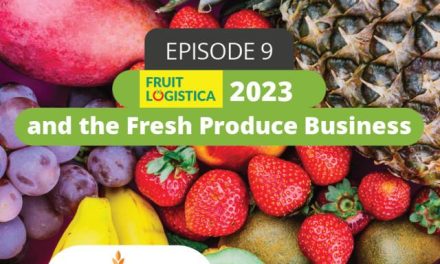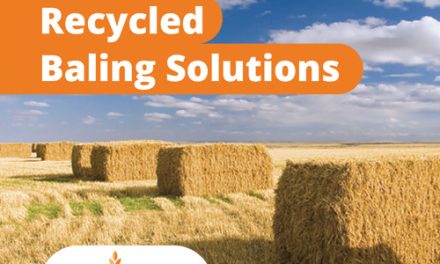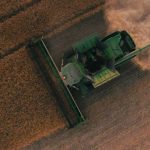
Regenerative agriculture: what is it about, characteristics and its benefits

There are many ways to understand everything related to the world of agriculture and one of them is getting to know part of the processes that come into play when it comes to cultivation. One of the alternatives is regenerative agriculture, an option to cultivate soils that attempts to take full advantage of its nutrients. Do you know what is it about? Here, we’ll talk a little bit about this alternative so you can know about it more in depth.
What is regenerative agriculture?
It is an agricultural alternative that considers a series of principles and practices of the agricultural world that are focused on rescuing and trying to implement plans that improve the entire ecosystem of a farm and grazing farm.
This option not only seeks to give greater importance to the care and health of soils that are used for food planting, but also highlights the need to improve water consumption in agriculture and reduce the use of pesticides and fertilizers that may compromise the integrity of the land, animals and food.
In sum, regenerative agriculture focuses on making better use of the resources used in agricultural production to take full advantage of them, in a more responsible way and avoiding their destruction or their irreversible extinction.
Response to the concern regarding the agricultural world and climate change
One of the big concerns, not only of agricultural producers but also of the community at large, is the impact that agriculture and grazing may be having on climate change.
This alternative to cultivate soils using regenerative farming practices arises as a response to that concern, which could help retain more carbon than what is produced.
According to information published on the website Fast Company, if this retention took place across the industry, some experts predict that the impact could be substantial. If the amount of carbon in farm soils increases by 0.4% each year, according to the European initiative “4 per 1000”, it could offset the 4.3 billion tons of CO2 emissions that humans pump into the atmosphere annually. Other studies take the figure to 3 billion tons.
Regarding this topic, it is interesting to read how crops in Almería, Spain and the use of plastics for greenhouses have helped improve the quality of the environment, as they manage to considerably reduce the annual average temperature by -0,25 ºC and reduce the increase in CO2 due to the accumulation of carbon in plants.
Today, many agricultural producers are implementing these regenerative farming practices as one of the best proposals to help reverse climate change, going step by step to improve the quality of the soil that has been degraded along with its organic components.
This means that, to some extent, it is possible to eliminate the carbon contained in the soils, which results in a better cycle and a better quality of the water used in crops and areas intended for grazing.
Characteristics of regenerative agriculture
One of the characteristics that defines regenerative agriculture is the fact that it is able to analyse land management from a holistic perspective to take advantage for example, of the benefits of photosynthesis in plants as a way to help close the carbon cycle, restore health to the soil and enhance the production of nutrients from the soil.
There are some key techniques that come into play when you decide to implement regenerative agriculture, which are the following:
- Conservation crops. It has to do with the ability to design farming plans that have minimal impact on soil erosion, since aggressive or drastic farming releases large amounts of carbon dioxide into the atmosphere, which is precisely what wants to be avoided.
When greater care is taken regarding the treatment of the land intended for cultivation, it is possible to increase the levels of organic matter of the soil, promoting the creation of more resilient and healthy environments for crops to progress and maintain carbon where it belongs.
- Variety in crops. It focuses on the importance of growing different types of plants in the same soil so that they provide a wide variety of carbohydrates that will be absorbed by microbes, which in turn will return a whole new variety of nutrients back to the soil.
This is extremely beneficial, especially for farmers, since over time they will obtain increasingly rich and dense lands with a much higher yield capacity, which results in an increase in food production.
- Rotation and cover crops. One aspect that causes soils to be vulnerable is a lack or excess of nutrients, having crops in drought conditions, and being exposed to harmful elements, so farmers need to occasionally rotate their crops in order to continually move the soil and to guarantee the quality of the nutrients it receives from plants and microorganisms.
Implementing cover crops on farms is also recommended in order to prevent the land from being unprotected, this allows to obtain soils with better organic matter where diseases and pest problems are less frequent.
There are also mulching plastics specially designed to cover crops and keep soils healthy, which can be of great benefit to regenerative agriculture.
- Minimal use of chemicals. Those who have had the opportunity to implement regenerative agriculture state that one of its benefits is that it reduces the use of chemicals that can jeopardize soil and food quality, since using some fertilizers or pesticides incorrectly can alter the natural balance between microorganisms and plant roots.
The top 4 benefits of regenerative agriculture:
- Addressing the climate crisis by extracting carbon from the atmosphere and retaining it in soils.
- Increasing soil biodiversity and organic matter.
- Stronger soils that can cope with natural phenomena as a consequence of climate change such as floods and drought.
- Healthier soils with more nutrients that decrease erosion and improve water quality inside and outside of farms.





![[eBook] Sustainability and water management](https://agriplasticscommunity.com/wp-content/uploads/8_550x310_ENG-440x264.png)
![[eBook Trends in Agriculture Plastics] Increasing use of biodegradable mulch](https://agriplasticscommunity.com/wp-content/uploads/550 × 310_2_ENG-440x264.png)
![[eBook Trends in Agriculture Plastics] Reducing the plastic used in the manufacture of agricultural films](https://agriplasticscommunity.com/wp-content/uploads/550 × 310_1_ENG-150x150.png)





















